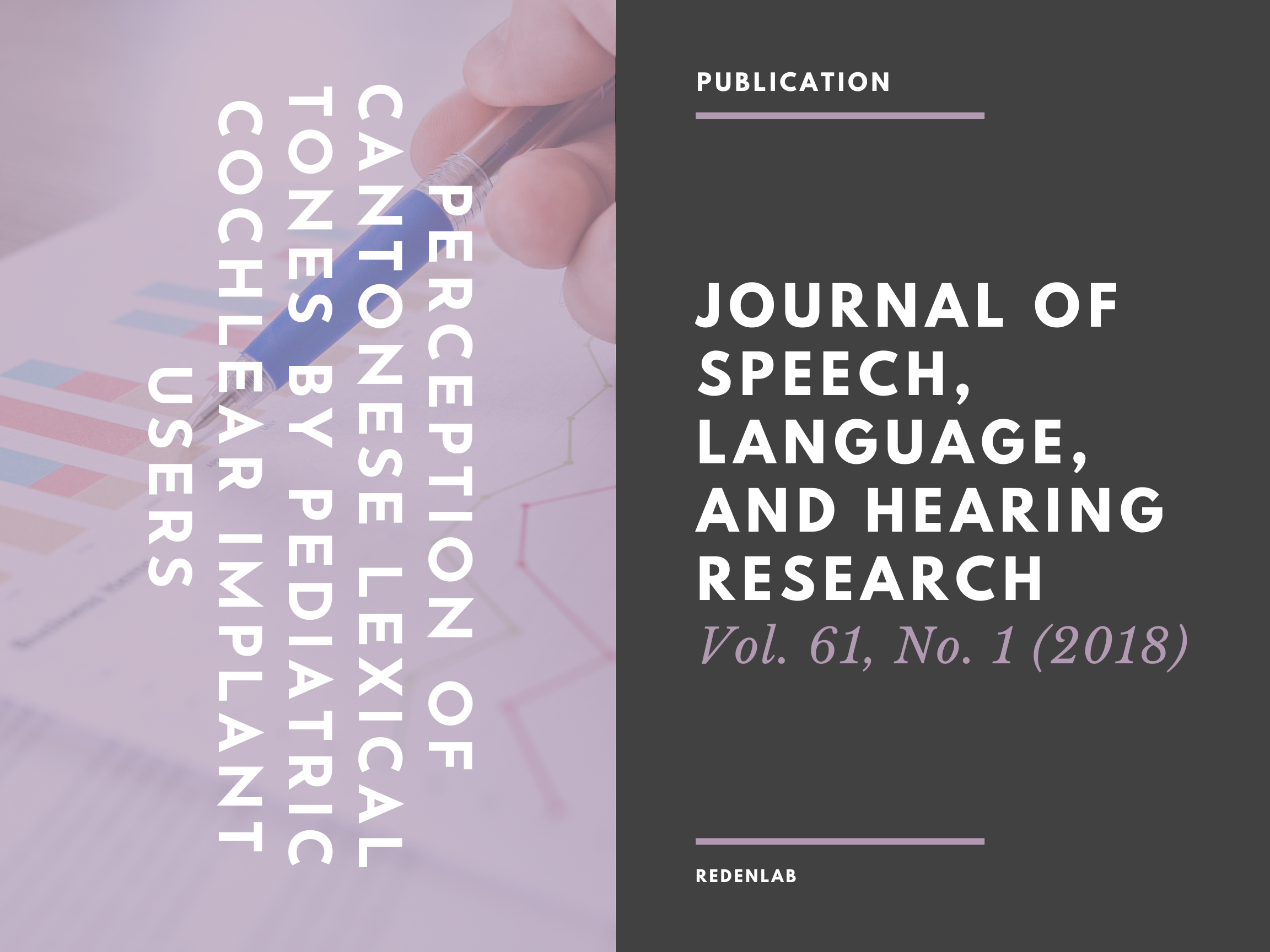SCIENCE: Perception of Cantonese lexical tones by pediatric cochlear implant users

PURPOSE:
The purpose of this study is to assess Cantonese word recognition and the discrimination of Cantonese tones with manipulated contours by child and adolescent cochlear implant (CI) users and a group of peers with normal hearing (NH). It was hypothesized that the CI users would perform more poorly than their counterparts with NH in both tasks and that CI users implanted before 2 years of age would perform better than those implanted after 2 years.
METHOD:
Forty-one participants were recruited from hospitals, schools, and kindergartens in Hong Kong: Ten CI users implanted at or before 2 years of age (“early” CI group), 13 CI users implanted after 2 years of age (“late” CI group), and 18 individuals with NH. The mean age at implantation of the early CI group was 1.5 years (SD = 0.3), and for the late CI group, it was 4.3 years (SD = 2.1). Participants were a mean of 13.3 years of age (SD = 3.7) at time of testing. Participants completed a Cantonese word recognition test and a discrimination task using Cantonese tones with modified fundamental frequency trajectories.
RESULTS:
Both CI user groups obtained significantly lower scores than the group with NH on the word recognition test. Mean percent correct scores for the word recognition test were 79% for the early CI group, 69% for the late CI group, and 97% for the group with NH. The group with NH consistently achieved higher scores than the CI user groups when discriminating manipulated Cantonese tones. Increasing the acoustic difference between tones improved discrimination performance for CI users for level tone contrasts only. CI users implanted at or before 2 years of age obtained higher scores than those implanted later.
CONCLUSIONS:
The results of this study add further evidence that children using CIs do not perform as well as peers in perceiving Cantonese tones. Modification of tones to increase pitch range did not consistently improve the ability of children with implants to perceive the difference between tones. Further research is required to fully assess potential benefits of early implantation for speakers of tonal languages.
Click here for more details.
